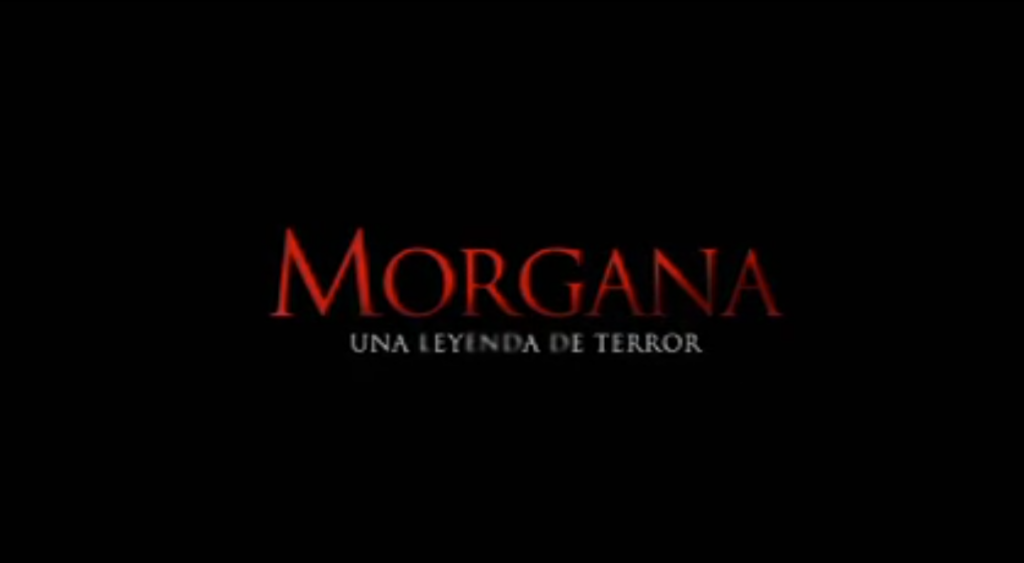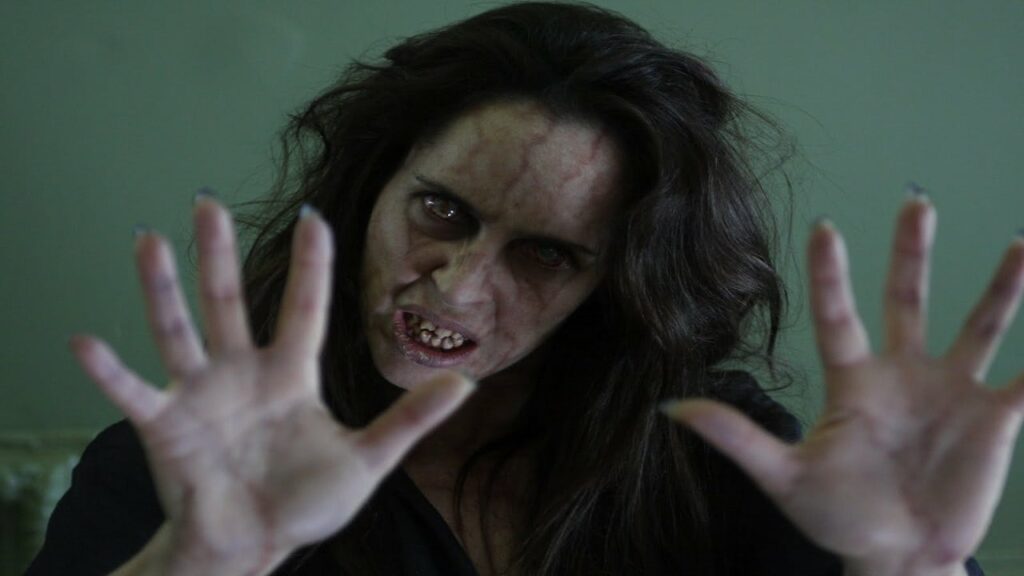Morgana La Pelicula
Secrets and Suspense | Ramón Obón’s Cinematic Puzzle

As a veteran observer of the cinematic landscape, I’ve always held a particular fondness for independent horror, a realm where filmmakers often push boundaries and explore the darker corners of the human psyche with a unique vision. It was with this anticipation that I approached Ramón Obón’s 2012 Mexican horror film, Morgana. The premise itself – a remote lakeside village haunted by a century-old secret and a vengeful spirit – immediately evokes a sense of classic dread, a narrative thread that has woven its way through countless tales of terror. The title, promising “Secrets and Suspense” and labeling the film a “Cinematic Puzzle,” further piqued my interest, suggesting a narrative that might unfold with layers of mystery and psychological intrigue.

123movies is the perfect companion for those who love spontaneous movie night marathons. No need to search for where to watch your favorite film — it’s all right here. With quick access, a user-friendly interface, and a rich selection, the site is a true gem for film lovers.
Background and Production
Morgana emerges from the independent filmmaking scene in Mexico, a production of Producciones Gonzalo Elvira S.A. This distinction is noteworthy, as it often signals a departure from more mainstream productions, potentially allowing for a more distinctive and perhaps unsettling approach to the horror genre. Indeed, one observer noted that the film was not produced by Televisa, a significant player in Mexican media, hinting at an artistic choice to operate outside the conventional studio system. The directorial vision behind Morgana belongs to Ramón Obón, who also penned the screenplay. It’s worth noting that Obón has a background in writing horror screenplays, suggesting a familiarity with the genre’s nuances and tropes. One review even mentioned frequent and suitable references to the horror films of Carlos Enrique Taboada, a celebrated name in Mexican horror cinema, which sets a certain expectation for the film’s style and atmospheric qualities. The film saw its initial release in Mexico on August 3, 2012, and was filmed in locations within Mexico City and the serene Valle de Bravo. The choice of these locations could potentially offer a contrast between urban settings and the isolation of the lakeside village, enhancing the film’s atmosphere. Adding to the film’s pedigree is the involvement of producer Gonzalo Elvira, whose family boasts a long and successful history in filmmaking dating back to the late 1930s, indicating a deep-rooted understanding of cinematic storytelling.
Synopsis: A Century of Secrets and Vengeance
The narrative core of Morgana revolves around a remote lakeside village that harbors a terrifying secret for a century. The catalyst for the unfolding horror is the suicide of a woman named Morgana. One hundred years later, a newcomer arrives in this seemingly tranquil village, only to be confronted with the chilling reality that Morgana’s restless spirit seeks vengeance, hungry for new blood. The film unfolds over a concise runtime of 90 minutes, presented in a 1.85:1 aspect ratio, with the dialogue primarily in Spanish. This brevity could contribute to a more focused and intense viewing experience, essential for building suspense in a horror film. While the provided materials offer a compelling premise, a detailed synopsis of the plot’s progression remains elusive. However, the setup itself promises a classic tale of supernatural retribution, a theme that has resonated with audiences across cultures and time.

The Cast of Morgana
The characters who inhabit this haunted landscape are brought to life by a cast including Siouzana Melikian as Morgana. Lilia Aragón plays Aunt Carolina, while Alejandra Adame portrays Sofía. Luis Felipe Tovar is Agustín, the gardener, and Irán Castillo appears as Daniela, the psychiatrist. Eugenio Becker is also among the main cast as Gustavo. Other actors listed include David Ostrosky, Alejandra Toussaint as Mercedes, and Ana Julieta Récamier. This ensemble cast suggests a community deeply intertwined with the village’s dark history, where each character might hold a piece of the puzzle or become a potential target of Morgana’s wrath. The presence of a psychiatrist, Daniela, hints at a possible exploration of the psychological aspects of the haunting, perhaps contrasting rational explanations with the supernatural events. Without more detailed information about their motivations and backstories, we can only speculate on the intricate relationships and secrets that might bind these characters together within the narrative of Morgana.
Critical Reception: A Mixed Bag
Turning a critical eye to Morgana, the available data presents a somewhat mixed picture. On IMDb, the film holds an average rating of 3.7 out of 10, based on 329 user votes. This score indicates a generally unfavorable reception from the online user base. However, within these ratings, there are contrasting viewpoints. One featured user review on IMDb offers a glowing 10 out of 10, describing the film as “great” and particularly praising its subtle approach to horror, focusing on visual richness and thoughtful engagement. This reviewer specifically lauded the excellent cinematography and the atmospheric and beautiful settings, also noting the references to Carlos Enrique Taboada’s work. This perspective suggests that Morgana might appeal to a niche audience that appreciates a more nuanced and visually driven horror experience. Conversely, another IMDb user review gave the film a stark 1 out of 10, labeling it as “Boooooring, slow, dull, poor acting”. This sentiment aligns with the lower overall rating, indicating that a significant portion of viewers found the film lacking in key areas such as pacing and performance. Interestingly, despite the tepid user reception on IMDb, Morgana received two nominations for the Silver Goddess awards in 2013. This recognition from within the Mexican film industry suggests that the film may have been appreciated for its artistic or technical merits by critics or industry professionals, even if it didn’t widely resonate with general audiences. Unfortunately, information from Rotten Tomatoes is inaccessible, leaving a gap in understanding the broader critical consensus.
Commercial Performance
Examining the film’s commercial performance, data from The Movie Database (TMDB) reports a revenue of $1,612,100.00. IMDb provides a slightly different figure, citing a gross worldwide of $1,476,499. These figures, while modest, offer a glimpse into the film’s box office success within the context of independent Mexican cinema. It’s difficult to ascertain whether this performance was considered a success without knowing the film’s budget and production costs. However, these numbers suggest that Morgana likely reached a certain audience, even if it didn’t achieve mainstream blockbuster status. The IMDb popularity rating of 7.8 indicates that the film garnered a degree of interest or visibility on the platform, although this metric doesn’t necessarily reflect positive sentiment towards the film itself.
Visual Style and Cinematography
One aspect consistently highlighted, even amidst negative reviews, is the film’s visual presentation. The aforementioned IMDb user who rated the film highly specifically praised the “excellent cinematography” and the “atmospheric and beautiful” settings. This aligns with the earlier observation about the references to Carlos Enrique Taboada, whose horror films are often lauded for their visual style and mood. This suggests that the filmmakers behind Morgana paid considerable attention to crafting a visually compelling experience, using lighting, camera work, and production design to create a sense of unease and atmosphere. The same reviewer also noted that while understanding the Spanish dialogue would enhance the viewing experience, the cinematography itself was strong enough to be appreciated even by those who don’t speak the language. This points to a potential reliance on visual storytelling to convey the horror elements, a hallmark of effective cinematic craft.
Conclusion: A Nuanced Independent Horror Film
In conclusion, Morgana appears to be an independent horror film that elicits a range of reactions. While the overall user ratings on platforms like IMDb lean towards the negative, citing issues with pacing and acting, there are notable exceptions that praise its subtle horror, atmospheric visuals, and cinematography. The film’s nomination for two Silver Goddess awards suggests a recognition of its filmmaking efforts within the Mexican industry. Its box office performance, while not spectacular, indicates that it found an audience. Ultimately, Morgana seems to be a film that prioritizes atmosphere and visual storytelling over more conventional horror tropes, potentially appealing to viewers who appreciate a more nuanced and artistic approach to the genre. For those seeking visceral scares and fast-paced action, Morgana might fall short. However, for those intrigued by independent Mexican cinema and the promise of a cinematic puzzle filled with secrets and suspense, it might be worth a look, particularly for its reportedly compelling visual style.
